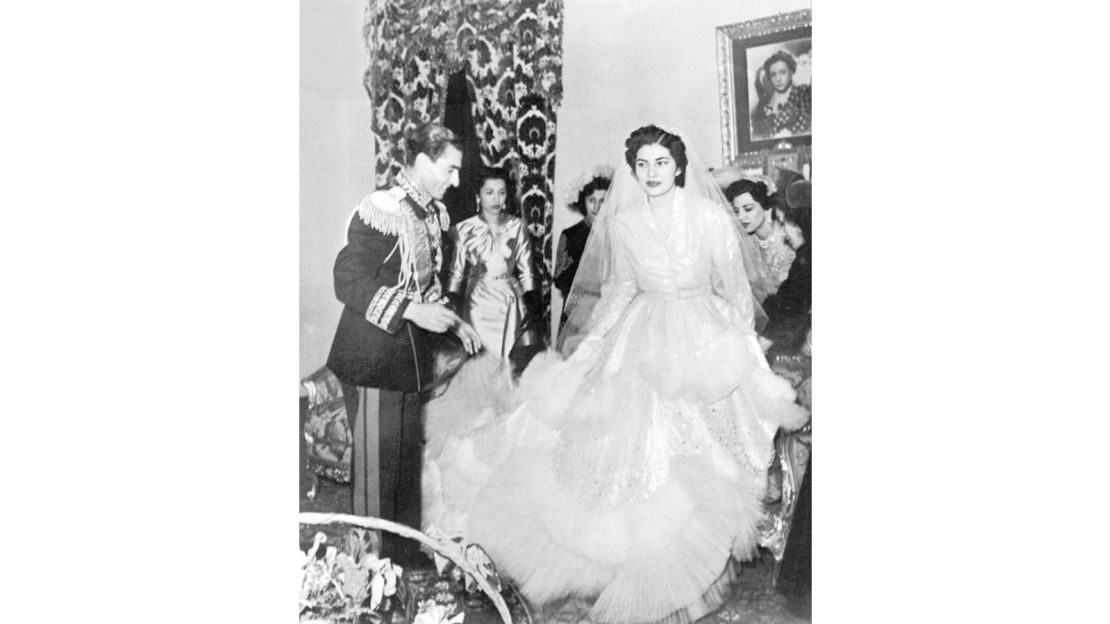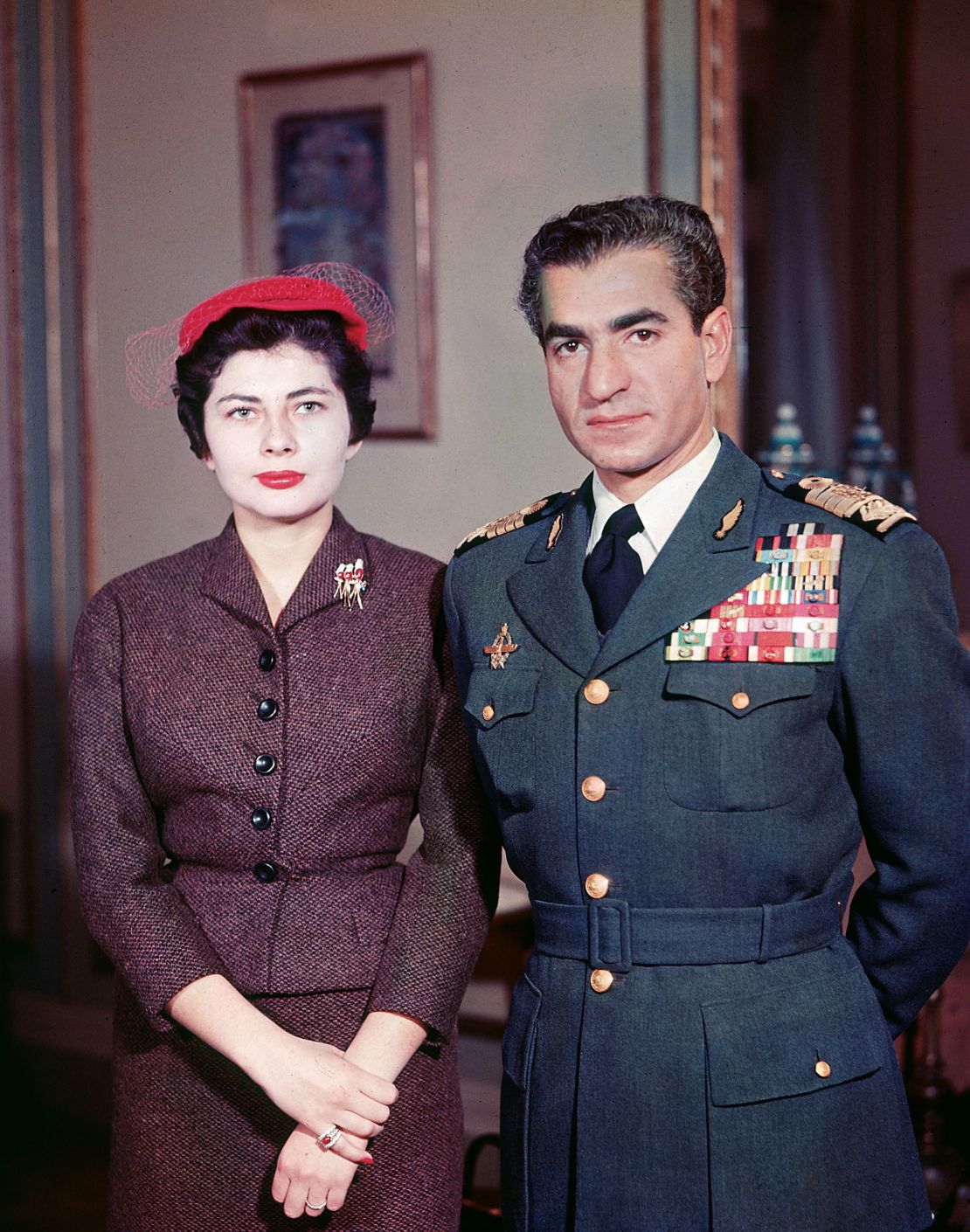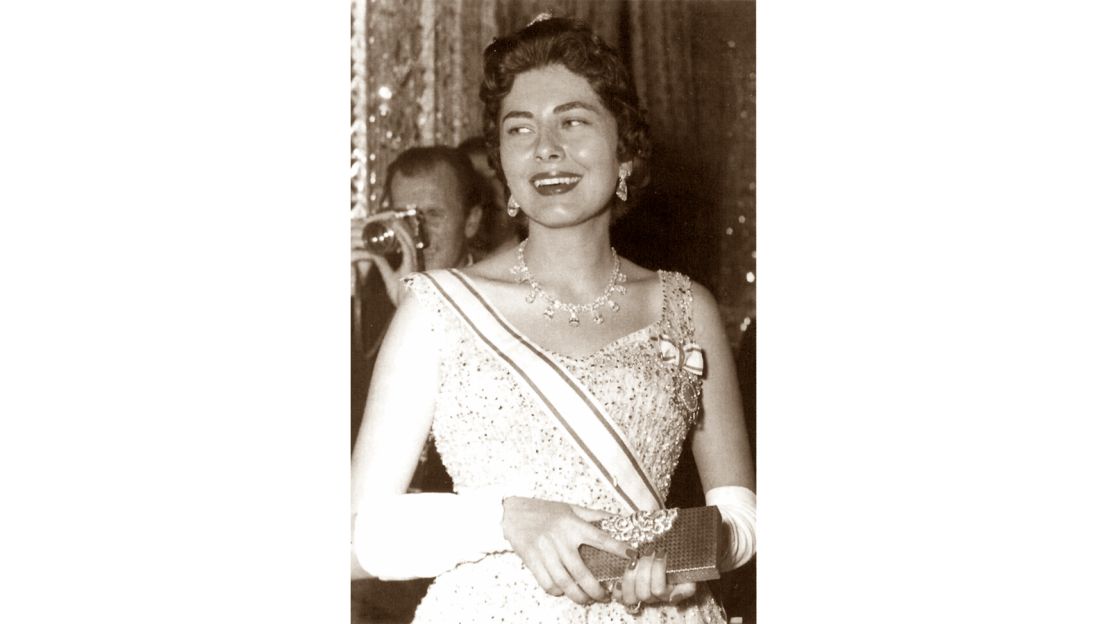Editor’s Note: Vincent Meylan is a specialist in precious stones and high jewelry. This is an edited excerpt from his latest book, “Christie’s: The Jewellery Archives Revealed.”
Soraya Esfandiary Bakhtiari never imagined that one day she would marry Mohammad Reza Pahlavi, and that she would reign over her country, Iran. She was queen for seven years, from 1951 to 1958. Brought up between Isfahan (a town in Iran) and Europe, Soraya had a relatively free adolescence. It was Princess Shams, older sister of the Iranian sovereign, who discovered this “rare pearl” during one of her stays in London.
Her brother, Mohammad Reza Pahlavi, had succeeded Reza Shah during a period of political unrest at the beginning of the Second World War. First married to Princess Fawzia of Egypt, the sovereign had only one daughter, Shahnaz, and a younger brother, Ali Reza, to succeed him.
When his marriage to Fawzia ended in divorce, it was essential that the Shah remarry to ensure the succession of the Crown and the stability of the country. From their first meeting in London, Princess Shams was convinced that the young Soraya was the wife her brother needed, and she invited her to return with her to Tehran.
Two days after her arrival in the Iranian capital, Soraya was invited to dinner with the queen mother, Tadj ol-Molouk. During the dinner, the Shah was announced. The following day, Soraya’s father said to her: “The Shah liked you very much. Are you ready to marry him?”
Twenty-four hours later their engagement was announced and Soraya, aged 18, had a magnificent diamond on her finger, given to her by the Shah.
Celebration and tragedy

The wedding should have followed quickly. However, Soraya became bedridden for several weeks after contracting typhoid. Legend recounts that the Shah brought her a jewel every day and placed it on her pillow. The wedding finally took place on February 12, 1951.
After weeks of illness, the event would prove a physical test for Soraya. She could hardly stand up. Outside, snow fell on the city. The Shah ordered the installation of dozens of wood burners in his freezing palace, in an attempt to alleviate her suffering.
Judging this insufficient, the court doctor prescribed that Soraya wear a woolen vest under her dress until the last possible moment. She put on a pair of woolen socks under her skirts. Christian Dior was commissioned to create the wedding dress, but made the outfit too large and too heavy for Soraya. The twenty meters of white silk that made up the dress were overloaded with gold embroidery and strass. The result was a wedding dress that weighed more than 30 kilograms.
Minutes before the ceremony, the Shah and one of his aides used scissors to cut away eight meters of the train, in order to relieve Soraya of some of the weight. Relieved, the new Queen of Iran could just about remain standing during the reception that followed the religious ceremony.
The first months of marriage were idyllic. Living in a large white villa that didn’t really resemble a palace, the Shah and his wife enjoyed a fairytale romance. The imperial family and the country at large awaited only one thing: the birth of an heir. However, the child did not come.

The drama of the couple’s private life became public in October 1954. On the evening of the 26th, the queen mother gave a family dinner at the palace to celebrate the Shah’s birthday. A few days before, Soraya’s doctor had confirmed that her hopes of a pregnancy were unfounded, and that it may take years for an heir to arrive.
The Shah, already morose, became angry when he was told that his younger brother, Prince Ali Reza, next in line to the throne, would not be present at the dinner – he had been delayed leaving a hunting party in the forests bordering the Caspian Sea. The following day the imperial family were plunged into grief when they learned that the plane carrying the prince back to Tehran had crashed.
The terrible news threw the Pahlavi dynasty and Iran into turmoil. Ali Reza had borne a son, Patrick, through a liaison with a young French woman, but his rights to succession were unclear. The Shah of Iran found himself in a delicate position: he was the only sovereign in the world without an heir.
From that moment, his marriage to Soraya was doomed. Familial and political pressure mounted on the young couple. The Shah and his wife decided that the only solution to the problem was that they should divorce. The dissolution of their marriage was duly announced on March 14, 1958.
A glamorous new beginning
A look at some of the world's most famous diamonds
Soraya left the country and took refuge in Switzerland, where she was targeted by the world’s paparazzi. They christened her “the sad-eyed princess.” Her ex-husband’s generosity allowed her to live an extremely comfortable exile between Rome, Munich and eventually Paris. She was invited to all the parties and became an icon of the jet set. She even made a film, although it wasn’t a great success.
Wherever or whatever it was – a gala opera in Paris, a party in Marbella, a ball in St. Moritz – she always made a dramatic entrance, beautifully dressed but a little distant. Her parures of diamonds, rubies, sapphires and emeralds were signed by the greatest names in jewelry: Cartier, Bulgari, Harry Winston, Van Cleef & Arpels.
At the beginning of the 1980s, when the Islamic Revolution in Iran reduced her revenue, Soraya decided to sell a number of her gems. The most beautiful amongst them, a diamond necklace signed Harry Winston, went to auction at Christie’s in Geneva on Nov. 17, 1988.

Princess Soraya died in Paris on Oct. 25, 2001. The Shah of Iran had died some 20 years earlier, in Cairo. She didn’t see him after he was dethroned in the revolution. Her brother, Bijan, who was her sole benefactor, lived in Munich.
He journeyed to Paris for his sister’s funeral and it was here that he also died soon after, following a heart attack. Soraya’s estate was sold at auction some months later in Paris. Even though he lived only a few days longer than Soraya, Bijan was the legal inheritor of her estate.
However, he had no legal heir, and the entire estate of the sad-eyed princess passed to the German state.
“Christie’s: The Jewellery Archives Revealed” by Vincent Meylan, published by ACC Art Books, is out now.




























